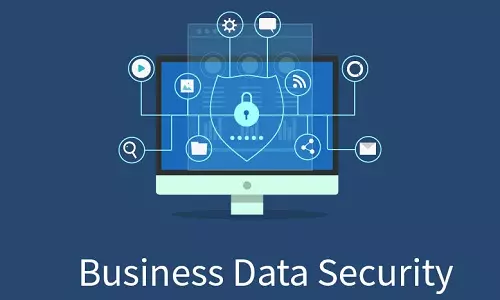Cloud Computing: Simply Explained
What are the different models of cloud computing? What are the benefits and challenges of cloud computing? What can one consider when choosing a cloud service provider?

... sneak peek
We can bet that you have come across the term cloud computing. If not the term, you have seen its implementation. Doubt it? The all too familiar Google Drive (a product of Google) is a pure form of cloud computing. It offers cloud storage to store files and applications such as Google Sheets and Google Docs to create, modify, and view documents online, without downloading them to physical devices such as personal computers, tablets, or phones. If you are using any Apple Inc.'s device, iCloud is a product offered as cloud storage.
So, what is cloud computing?
Cloud computing refers to the sharing of robust and configurable computer resources on an on-demand basis and is one of the trending topics in the computing and information sector. These resources range from hardware infrastructures such as data storage space to software applications and services, and processing power. Several fundamental technologies have contributed to the development, including distributed systems, mainframe computing, grid computing, virtualization, service orientation, and utility computing.
Cloud computing was conceptualized in the 1950s but had fewer capabilities due to the limited computing technologies that existed back then. As computer technology evolved, different technologies such as virtualization by IBM emphasized the concept of cloud computing and contributed heavily to its development. Over time, as stated herein, the collective collaboration of computing technologies and concepts has been significantly attributed to the development and growth of cloud computing.
Cloud Computing Models
Businesses and organizations' Information Technology (IT) infrastructure often struggle under the unprecedented weight of production and meeting customers' expectations for fast, robust, secure, and reliable services. As is the case, businesses rely on expanding their infrastructure to meet the ever-growing demand for resources relating to data storage and processing.
Cloud computing provides alternate solutions for individual users and businesses to increase their IT capacities and functionalities.
Cloud technology has both service models and deployment models that provide different functionalities and capabilities. The three main service models include Infrastructure as a Service (IaaS), Software as a Service (SaaS), and Platform as a Service (PaaS). In addition, the three main deployment models include the public, private, and hybrid cloud.
The different cloud computing service models have clear distinctions in terms of storage and resource pooling which satisfy a unique set of business and user requirements.
a) Software as a Service (SaaS)
SaaS also referred to as web services, is a software distribution model where a vendor hosts an application and avails it to subscribers over the internet on-demand and provides application data management such as file backup.
b) Platform as a Service (PaaS)
In addition, the PaaS cloud provides a toolkit for conveniently developing, testing, deploying, and administering custom software and applications. PaaS clouds provide robust software and applications building blocks and development tools such as programming languages and run-time environments that facilitate the development, testing, and deployment of high-quality and scalable applications. These capabilities make the PaaS cloud suitable for developers and IT teams focused on creating custom software applications.
c) Infrastructure as a Service (IaaS)
IaaS provides basic storage and computing capacities as standardized services over a network. As a subscriber, one gets access to virtual computers, network-accessible storage, network infrastructure components such as firewalls, and configuration services. The IaaS cloud environment enables individuals and businesses to host their applications and data on the cloud.
Public vs Private vs Hybrid Cloud Models
It is imperative to note that the three service models can interact with each other to form a more comprehensive cloud computing model - a hybrid model.
Cloud computing models differ based on implementation, hosting, and access control.
1) Public Cloud
A public cloud is a service model where a cloud service provider (CSP) manages the computing resources and shares these resources among clients using the affordable pay-per-use model. The public cloud is described as cost-effective and easily scalable making it suitable for businesses with a tight budget requiring quick solutions to enhance IT infrastructure.
2) Private Cloud
A private cloud is a deployment model where a single business or organization accesses IT resources in a controlled, more centralized way. The private cloud can either be on-site - implemented at a customer's premises - or outsourced - hosted by an external company or vendor. Implementing the private cloud deployment model is expensive and management-intensive; nonetheless, it offers more security and privacy.
3) Hybrid Cloud
The hybrid cloud model is a combination of both the public and private models. It provides a more tailored solution, enabling cloud application portability, resource sharing, privacy, and enhanced security.
Characteristics of Cloud Computing
Five distinctive characteristics identify and demonstrate the concept of cloud computing.
a) Cloud computing is characterized as an on-demand self-service where resources can be provisioned without requiring input from the cloud service provider. A user can easily manage the storage space, virtual machine and database instances, and other cloud components as needed.
b) Broad network access is another characteristic of cloud computing. Cloud computing services are provided over standard networks including LAN and WAN and accessed from heterogeneous devices such as workstations and mobile devices.
c) Further, cloud computing is designed to support multiple users and allow them to share physical infrastructure while maintaining their privacy and security, a concept identified as multi-tenancy. Also, resource pooling describes a concept where multiple cloud users use the same physical resource such as applications and services.
d) Furthermore, cloud computing is characterized as rapidly elastic and scalable. Rapid elasticity describes the cloud's ability to provide resources when needed and release them when they are not required. Scalability refers to the immediate availability of additional resources as needed, varying with the dynamic demand of the computing resources.
e) Also, cloud computing resource usage is metered and customers pay for used resources based on actual consumption. The charge-per-use cloud computing capability helps leverage optimized resource utilization.
Benefits of Cloud Computing
The biggest benefit of cloud computing is cost saving. As stated herein, traditional businesses rely on on-site computing infrastructure, which requires personnel to manage and maintain. Cloud Service Providers (CSP) are responsible for acquiring, configuring, and managing resources at no additional cost to the customers.
Mobility is another key advantage of cloud computing. By hosting applications and data on the cloud, users can continue working regardless of their geographical location.
Data security is a significant concern for businesses due to the increased cases of cyber-attacks. Cloud computing offers an array of security features that guarantees security and privacy for the customers' data and applications.
Similarly, scalability is a primary advantage of cloud computing. Businesses are often faced with dynamic demands for IT resources. With cloud computing, a business can match its IT needs by acquiring extra resources when demand increases or releasing them when demand decreases.
In addition to security, data loss is also a primary concern for businesses. Data storage and recovery are some of the fundamental components of cloud computing. By hosting data and applications on the cloud, a business is guaranteed continuity even in the occurrence of disasters that lead to damages to on-premise IT infrastructure.
Concerns of Cloud Computing
As businesses and other institutions shift their workloads to the cloud, there are parties that are resistant to the change. The main concern lies in the security of the cloud infrastructure to help protect the applications and data. Loss of sensitive data due to cyber-attacks demoralizes the migration to cloud solutions.
Further, constant changes to the legal and compliance regulations are also a key concern for businesses opting for cloud solutions. Failure to comply with these standards and regulations attracts operational and legal penalties, scaring off businesses from cloud computing.
Lack of control is a concern for businesses seeking cloud computing. With on-premises hosting, a business has complete control over the functions of the IT infrastructure, a responsibility transferred to a service provider in cloud computing.
Considerations When Choosing a Cloud Service Provider
Cloud computing is a considerable solution for businesses that seek more agility, lower operation costs, and increased productivity and efficiency. Despite the comprehensive benefits of cloud computing discussed herein, cloud service providers vary in the provision of computing resources. When migrating from on-premises IT infrastructure to cloud computing, a business should carry out an audit of potential cloud service providers before making the final decision.
1) A fundamental consideration that should be made is the pricing structure. Different cloud service providers (CSP) have different price structures for their resource packages. A business should consider the resource package of choice and compare the prices of the various CSPs. Nonetheless, it is imperative to note that lower prices might be compensating for a lower optimum level of services.
2) Further, each cloud service provider has a unique Service Level Agreement (SLA), which contains the CSP's service standards, terms, and conditions. A business should thoroughly evaluate the SLA provided before selecting a CSP.
3) Furthermore, it is also imperative to consider the providers' security, uptime, backup, business continuity, and disaster recovery policies. These features demonstrate the efficiency of a cloud service provider in matters concerning applications and data security and backup and disaster recovery.
4) In addition, the technical support provided by different cloud service providers is critical in selecting the best CSP as different providers have varying support schedules and different modes of communication.
Trends in Cloud Computing
Cloud computing has been a trending topic for the last several years, as individual users, businesses and organizations actively migrate to it from previously embraced on-premises IT infrastructure. This migration can be attributed to the exponential growth in the computing industry and the emergence of robust technologies.
Artificial Intelligence (AI) is one of the technologies that will increase the efficiency of cloud computing. When used in data centers, AI can be used to proactively solve problems and use past data to help distribute cloud computing resources and workloads during peak periods more efficiently.
The emergence of new IT frameworks will further help centralize monitoring and increase scalability, boosting business confidence in cloud computing.
Further, the Internet of Things (IoT) technology is a leading technological advancement with innovations in data analytics. Cloud computing plays and will continue to play an active role in real-time data processing and reporting.
... Conclusion
Cloud computing has revolutionized business informatics by facilitating the interaction between business operations and cloud computing. The concept of cloud computing has enabled individual users, businesses, and organizations to have access to superior and robust computing infrastructure hosted externally or managed by other agents. In addition, the fundamental benefits of cloud computing including reduced operations and maintenance costs increased productivity, enhanced performance and efficiency have seen businesses prefer cloud computing to on-site IT infrastructure. Further, cloud computing offers a reliable and secure way of running and managing business data and applications. As discussed herein, cloud service providers have packages that have different characteristics including service and deployment models tailored to suit different business models. A business should carry out thorough audits of shortlisted cloud service providers before selecting the best alternative.






